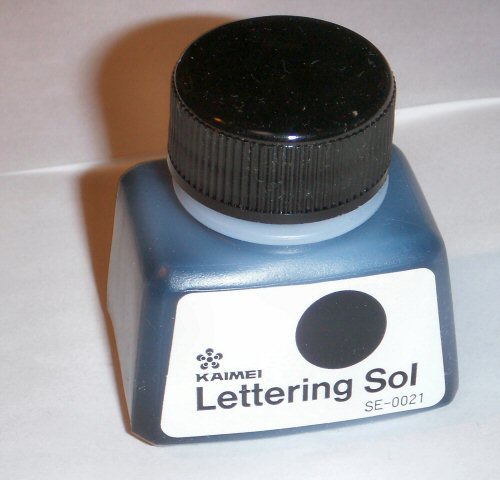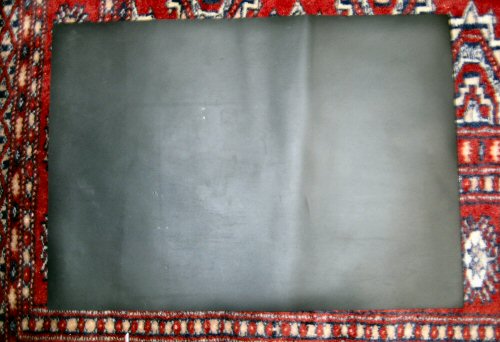| アラビア書道に使われる道具 |
| アラビア書道に使う道具を紹介します。 |
ペン
PEN |
文字の大きさによって数種類の太さの筆を使い分けます。筆は通常市販されていないため、書家が自分で竹や葦(あし)、あるいは木を削って作ります。
(右:様々な大きさをもった筆『Letters in Gold』(The Metropolitan Museum of Art発行)
Calligraphers use pens with various widths of nibs. As these pens are not
sold in the market, the calligraphers themselves produce by scraping bamboos
or reeds. |
 |
墨
INK |
現在は墨汁(左側)を使います。漫画のベタに使用するレタリングゾル(右側)を使用することもできます。
昔は、亜麻、蜜蝋、ナフサ、ケロシンなどを燃やしてできた煤をアラビアゴムと蒸留水に混ぜ、長い時間をかけて粉砕して作っていました。
Now chinse ink (left) or lettering sol(right) are used.
In olden days, the chinese ink is made from soot by burned flax, beeswax,
naphtha or kerosene and gum arabic and water. These materials are all mixed
and pulverized together for long time.
|
  |
墨壺
INK BOTTLE |
墨壺とそれに入れる材料です。左から、ジャムの空き瓶、真綿、海綿です。瓶には海綿、真綿の順で入れます。竹筆に墨が付きすぎないよう調節するためです。(右下の図は筆と墨を同時に運べる道具で日本の矢立(やたて)のようなもの。出典:『Letters in Gold』(The Metropolitan Museum
of Art発行)
From left to right, shows ink bottle and silk cotton and natural spoge.
These materials are to be put into the ink bottle for controling quantity
of bokuju adhering to nibs..
Down figure shows portable ink-and-brush case used in Othman Empire era.. |
  |
 |
紙
PAPER |
表面がツルツルした紙を使います。カレンダーやチラシに使用されているアート紙の少し厚手のものが最適です。
アート紙がなかった頃は通常の紙の表面に卵白に塩を混ぜて薄めた液を塗り、乾かした後、瑪瑙(めのう)などのような固い石で擦って表面をツルツルに仕上げた紙を使っていました。
Papers with smooth surfaces such as art papers, or backsides of calenders
or backsides of fliers, are suitable. In olden days, liquid of albumen
with salt was coated on the normal papers. Such papers are dried and then
scraped with hard stone like agate until slick till they are smoothened.. |
 |
| その他の道具OTHER TOOLS |
下敷き:竹筆は筆先は固いため、紙の下に少し弾力性のある下敷きを敷くと書きやすくなります。右図のものは薄手のゴムでウエットスーツなどに使う素材です。
ナイフ:筆先の鋭さが鈍った時に削る目的の他、紙に書いた修正する為にも使用します。
スポイト:墨汁はしばしば乾燥により、濃くなりすぎる為、時々水を差す為、使います。
ヤスリ:筆先を常にシャープにするため使用します。粗めのものと、細かいものの2種類があれば便利です。
Underlay: Elastic underlay helps writing by hard bamboo pens. This material
is for wet suit.
Knife: Knife is used for sharpening the bamboo nib and also collecting
the works.
Dropper: Dropper is used for thinning down bokuju.
Rasp: Rasp is used for sharpening nibs. Both rough and fine rasps are convenient.
|
 |
 |
 |
 |
|
|